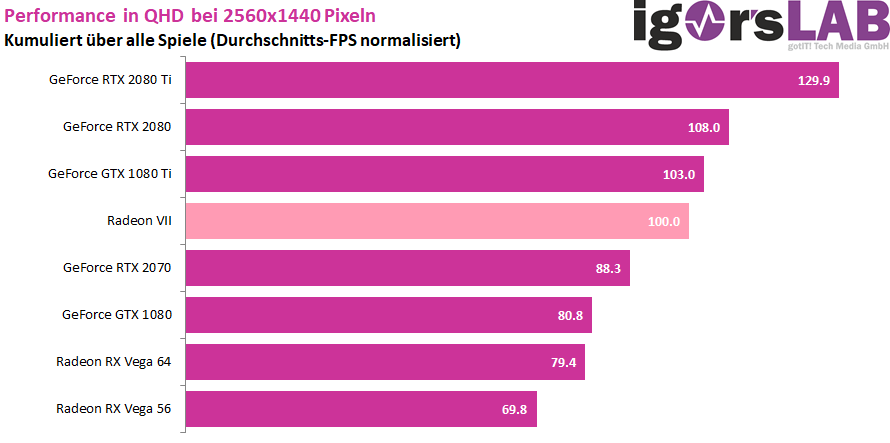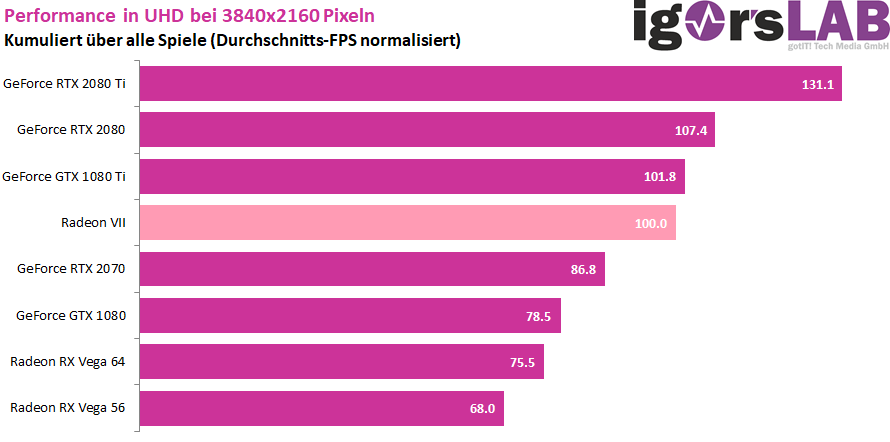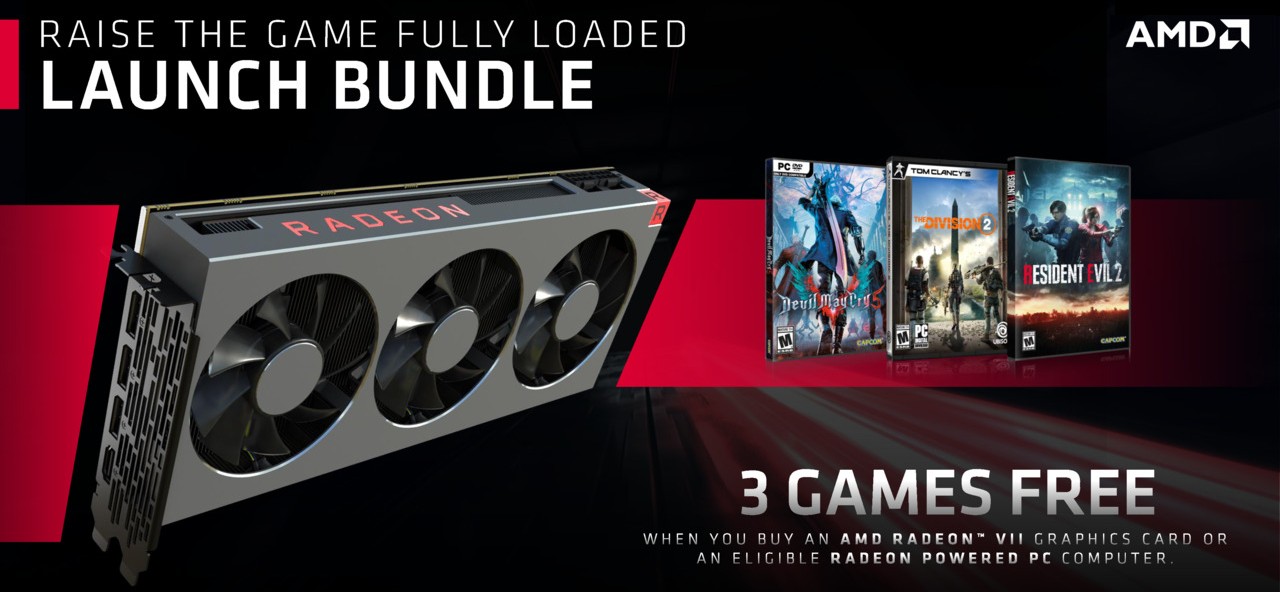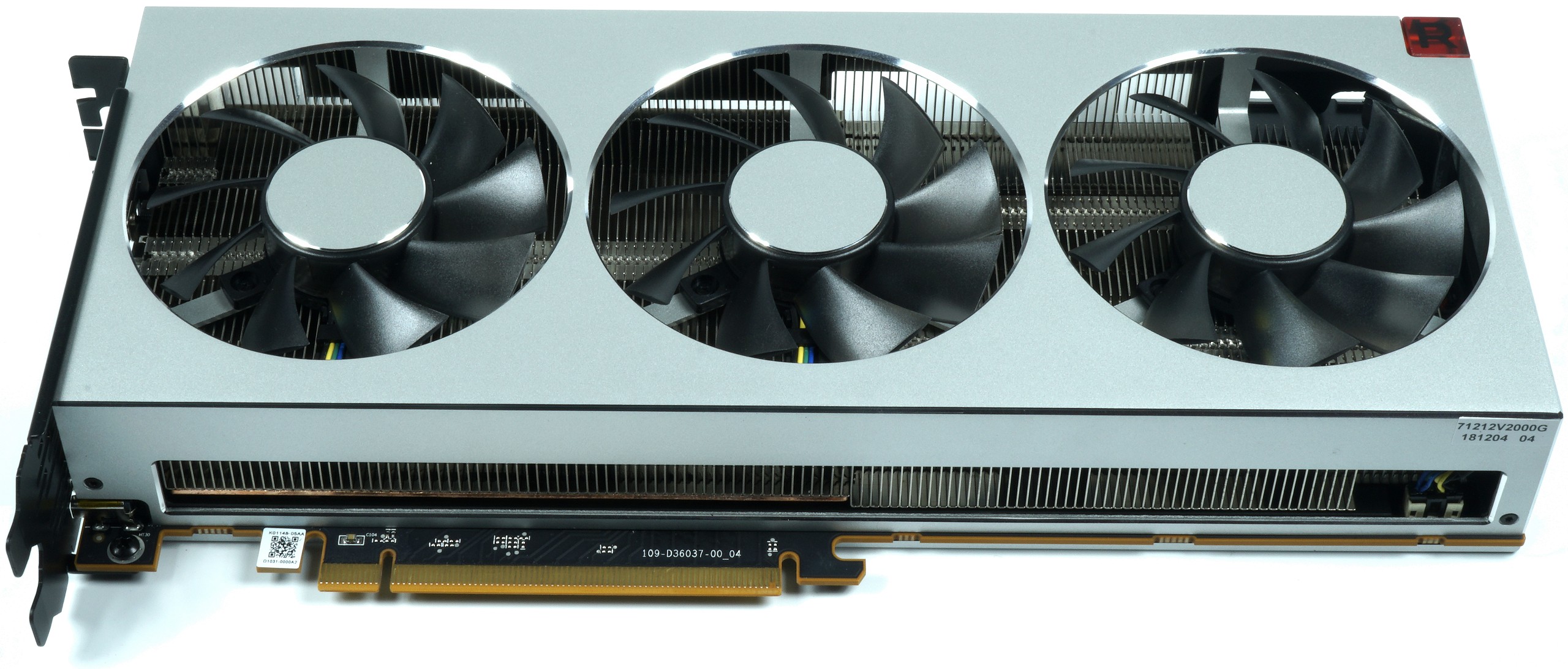Summary
The announcement of the AMD Radeon VII was of course something of a surprise for (almost) everyone. But whether you're a gamer, content creator or reviewer, anyone who has been waiting for competition in the high-end graphics market will surely welcome the breath of fresh air. Even if you have to make certain restrictions here. It doesn't compete with the GeForce RTX 2080 Ti, the current top-of-the-line Nvidia model in the consumer market, but with the GeForce RTX 2080, the current top-of-the-range card. I leave the RTX Titan aside, because it is a pure influencer card and an upper class children's toy that only fits the golden spoon.
The Radeon VII is much more down-to-earth and carved from other wood silicon. It faces Nvidia's GeForce RTX 2080 – a card that recently made Nvidia's former flagship, the GeForce GTX 1080 Ti obsolete. Therefore, the Radeon VII is certainly ideal for games with a resolution of 2560 x 1440 pixels at maximum detail or 3840 x 2160 pixels with some quality compromises to keep frame rates fluid.
To sweeten the deal, AMD is offering a three-game bundle with Radeon VII, which includes Resident Evil 2, Devil May Cry 5 and The Division 2, making it one of the best bundles ever offered with a graphics card. Of course, bonus games are a big distinguishing feature, but the rest is as usual. However, if you plan to purchase these games anyway, you may also include this in a purchase plan. price.
But before you recommend something to buy, it must first assert itself in a powerful competition. If we now take the geometric mean of each game in the average frame rate of our benchmark suite at QHD, the Radeon VII is 26% faster than Radeon RX Vega 64 and thus brings exactly what AMD predicted in advance. This is a really impressive win, but it doesn't come as much of a surprise.
However, according to the same equation, the Radeon VII is only slightly more than 92% of the average frame rate of a GeForce RTX 2080 FE in our 11 selected games. It would of course be possible to install games that are better suited to AMD's GCN architecture, but we have deliberately re-established the tried-and-tested mix of old and relatively new, because we can rule out driver surprises and inexplicable fluctuations here. With a Radeon RX590 vs. GeForce GTX 1060 this mix works too – even with slight advantages for the AMD card!
It should also be remembered that with the GeForce GTX 1080 Ti you finally reach a map that was introduced in March 2017 and existed in full expansion in the form of a Quadro P6000 even longer. That's two years, which is a huge period of time in the graphics card sector. But it would certainly be unfair to pin the qualities of the Radeon VII on these gaming benchmarks alone, even if the advantage of the 16 GB HBM2 and the immensely large memory bandwidth in QHD at 2560 x 1440 pixels was not so important.

The radeon VII's powerful storage subsystem shows the advantage of the new card over the Radeon RX Vega 64 but at least in Ultra HD at 3840 x 2160 pixels. The geometric mean of the average frame rates increases by almost 33% and with the 63 FPS also the 48 FPS of the RX Vega 64 very clearly exceeds the 48 FPS. AMD thus gets a little closer to the GeForce RTX 2080 by reaching at least 93% of its average frame rate in our suite.

But, of course, average frame rates aren't everything. AMD knows that the great strength of the Radeon VII lies in the 16 GB HBM2 with 1 TB/s bandwidth. That's why AMD naturally finds various sugar-sweet cherries when you point out situations where 8 GB and sometimes even 11 GB of graphics memory are no longer enough, resulting in ugly frame time spikes, which in the worst case even show up as stuttering. The remake of Resident Evil 2 is such a candidate that still runs perfectly with maximum textures and graphics settings on the Radeon VII even in Ultra HD. Even with the 11GB of a GeForce RTX 2080 Ti, there are already nasty reload jerks here, a GTX 1080 Ti has even disembarked several times.
I believe that this issue deserves further investigation and I therefore also plan to collect additional data using several products from both companies. Thus, frame-time aberrations can be isolating using practical examples instead of using hand-picked benchmarks, which are also designed to deliberately and intentionally kill the memory by force, only to prove anything in any way in anyone. Here we focus on practice and fairness rather than click-bait and cherry-picking.
It is extremely difficult to judge Radeon VII without emotion and fairness, because there are many facets that must be included responsibly in such a judgment. A conclusion always has something absolute and final. And that's exactly what doesn't work with the Radeon VII. That's why I'm going to try to draw my final conclusion from the eyes of different users (which doesn't mean I'm a multiple personality).
The Radeon VII for players
If you don't swear by AMD because you generally feel uncomfortable with other products and who is also sure to reach for the next upgrade with the 8GB graphics memory of a GeForce RTX 2080, the current purchase price of 729 euros for the Radeon VII will be nothing. really wrong, but also don't get the best when it comes to the mix of pure gaming performance, price and power consumption. Unfortunately, this has to be said so hard, because the card is actually 2 years late on the market.
If you can arrange with the price and also the significantly higher power consumption, because the purchase price is not a purchase criterion and you do not use the card so often that the energy supplier runs jubilantly in a circle, it will stop at the cooler at the latest. Although AMD promises that it is still working on a potentially more elegant way to deal with this cooling (rather than chasing the fans from idle to top speed in seconds), this is a subjunctive for the future, but nothing guaranteed.
AMD has explained that the GPU throttling and fan control at Vega 20 are controlled over a network of 64 sensors that produce a novel and averaged reference temperature instead of relying on specific individual temperatures. But the current implementation, which focuses on performance rather than balance, is simply too intrusive and too loud for me. With Wasserblock this may look different, but if you had been completely accurate in the review, you would have had to run the Founders Edition of the GeForce RTX 2080 with 3000 rpm. Then this card will boost again significantly. AMD will probably have to fine-tune the fan control and price in order to make an explicit recommendation here.
If you are still looking for an argument for the Radeon VII, you may also be able to the variances in some games. Not everyone is as sensitive as I am, but just take a look at the solo graphics at Battlefield V. For Radeon VII, this is a much smoother course. It was not for nothing that I took the trouble to export all the curves once again, so that the last one could see it. Especially since it is comparable, because I have interpolated all the gradients really nicely on the time-line. Then you also unmask every little hoppel hass.
The Radeon VII for the Content Creator
Creating content is a very different matter. There weren't enough rendering or coding workloads in our suite to be able to judge in an all-encompassing way. But it is already becoming apparent that the Radeon VII is not actually the successor of the RX Vega, but rather the Vega Frontier Edition. Because as I was able to measure in comparison with the Quadro P6000 and other cards, additional memory makes a big difference in the workloads that can use it or can use it. need to be mandatory.
In fact, it can make the difference between a successful process and a crash. But storage alone isn't everything. Bandwidth-intensive benchmarks such as LuxBall HDR show very impressively that the Radeon VII is quite capable of beating monsters like a Titan RTX in the right situations. AMD is also bringing the GeForce RTX 2080 to the back of the SPECviewperf 13's energy and medical viewsets, as both benchmarks are both likely to benefit from much fast on-board storage.
The Cinema4D and Blender tests are more likely to speak for GeForce RTX 2080. However, once you start with more specialized workloads that include specific optimizations for AMD or Nvidia, it's much harder to generalize such a statement. If you are sure that e.g. Use your own 8K projects in Adobe Premiere more memory than you can find on a card with 8GB or 11GB cards, then Radeon's 729 Euro IS an almost affordable alternative to the Titan RTX with 24GB GDDR6 and much less Memory bandwidth.
My very personal conclusion
To be really happy with the Radeon VII, it really has to be the right card for the right customer. What might appeal to the experimental gamer would be a possible sub-voltor or Overclocking with improved cooling. instinct, optimism and a working software. With the new API, AMD is (still) a bit of a leg up, but drivers are always maturing a little over time.
If you are also haggling for a few euros or a few kilowatt hours more or less in the class over 600 euros, even though it would not kill you, you should rather count peas in the kitchen. But if you have to save really hard, because you want to buy something very special for the here and now, with a GeForce RTX 2080 for currently 649 Euro (and more) is probably better and above all quieter.
Personally, I'm glad that AMD can play at the top again (though not at the top), because it dispels the almost crippling boredom immensely. But there is still much to optimize and clarify before you finally raise or lower your thumb. In the end, I prefer to leave this to the market and to the mature readers, because my opinion is now God knows no dogma. Just a food for thought, as did the whole review.
Finally, I would have a sentence to get rid of a possible availability on launch day. My colleagues and I have interviewed dealers and also tried to correctly classify the media's noise. to interpret it. Four-digit availability in North America, for example, of approx. 5000 units for the USA, contrast low double digits for some European countries (e.g. Spain and France with 20 pieces each). Germany could well do a little better, but here too the limit is already indirectly noticeable. One comment on the quantity was that you don't want to take a risk of a pre-order list, but will simply sell off what's there and done. Who comes first… And they would not comment further because there was nothing to comment on. Also a statement.
Credits: My personal thanks go to my colleague Chris Angelini (Tom's Hardware USA), who, despite his vacation, contributed his benchmarks in the usual way, and to my family, who bravely endured me even in a stressed form as always. After the launch is before the launch, so something will come soon!
Visit Igor Wallossek and igor'sLAB on YouTube!
- 1 - Einführung und Daten
- 2 - Vega20 - Was ist neu?
- 3 - Tear Down: Platinen-Analyse und Kühlerdesign
- 4 - Anwendungsbenchmarks
- 5 - Ashes of the Singularity: Escalation
- 6 - Battlefield V
- 7 - Destiny 2
- 8 - Tom Clancy's The Division
- 9 - Far Cry 5
- 10 - Tom Clancy's Ghost Recon
- 11 - Grand Theft Auto V
- 12 - Metro Last Light (Redux)
- 13 - Rise of the Tomb Raider
- 14 - The Witcher 3
- 15 - Wolfenstein II: The New Colossus
- 16 - Leistungsaufnahme und Netzteilkalkulation im Detail
- 17 - Temperaturen und Infrarot-Analyse
- 18 - Lautstärkemessungen mit Video und Analyse des Spektrums
- 19 - Zusammenfassung und Fazit

































Kommentieren